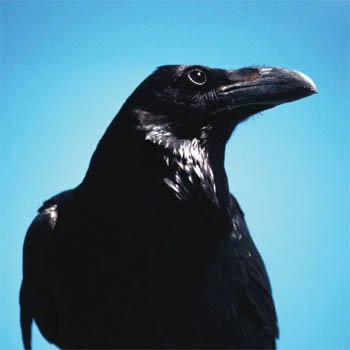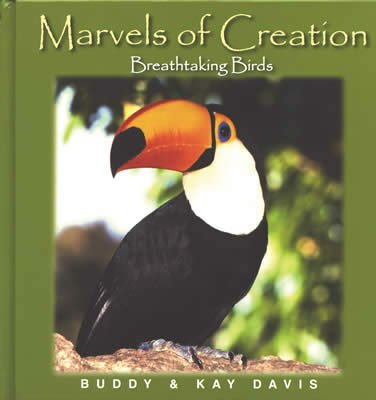Common Raven
The raven is the largest member of the crow family and also the largest songbird.

The raven is the largest member of the crow family and also the largest songbird. It can be found almost anywhere in the Northern Hemisphere including North America, Greenland, northern Africa, Asia, and Europe. Ravens are also found in Nicaragua.
The raven has a heavy, Roman-shaped beak. It is black all over but has a violet and green iridescent sheen when the sun strikes its feathers.
The raven is mentioned 11 times in the Bible. It is the first creature Noah released to try to find land after the global flood (Gen. 8:7). The American Indians of the Northwest believed the raven was a symbol of divinity; contrariwise, the raven was a symbol of evil during medieval times. Aesop used the raven as the main subject of a few fables and Edgar Allan Poe immortalized the raven in his famous poem.
The raven and other crows are believed to be the most intelligent of all birds. They can learn to emulate human words and the sounds of other animals and pets. The raven is cunning, mischievous, and playful, being known to steal (or borrow) trinkets and keep them stored in secret places. Tame birds make entertaining pets. Their call is a deep call of “corronk.”
Ravens live in mountainous regions, as well as cliffs, lowland woods, seacoasts, banks of rivers, and treeless tundra, sometimes gathering in large flocks of up to 200. Although ravens are considered by some to be cowards, they can be aggressive when defending their territory. For the most part, they are scavengers and will eat almost anything. They sometimes hunt small mammals, birds, reptiles, and will also gather and store acorns and grains.
Ravens are graceful flers with powerful, regular wingbeats. They can soar, hover, and do acrobatic somersaults, tumbles, and dives. In flight, the raven can be distinguished from the common crow by its wedge-shaped tail and large size.
Ravens mate for life with most pairs using the same nest year after year. The nest is built by both male and female out of large twigs packed together with mud and lined with grass, wool, hair, moss, etc. Between four and six pale greenish-blue eggs with brown spots are incubated by the hen for three weeks. When the chicks are born, both parents leave the nest and roost in a nearby tree. This habit has given the raven a reputation of being an unkind parent. The Book of Psalms reads, "He giveth to the beast his food and to the young ravens which cry" (Psalm 147:9). Both parents feed the chicks and in five to six weeks the young can fly and will leave home.
Common Raven
Passeriformes • Corvidae • Corvus corax
Weight: 2.2–3.0 pounds (1–1.33 kg)
Length: 242 inches (61 cm)
Wing Span: 47 inches (1.2 m)
Life Span: 12 to 20 years
Special Design Feature: The raven is a sophisticated flyer and can do
numerous aerial stunts.
Did you know? The raven is considered to be one of the most highly intelligent
birds in the world.
Marvels of Creation: Breathtaking Birds
This spectacular book brings the world of feathered creatures alive in a unique and colorful way.
Browse Kids Book- © 2024 Answers in Genesis
- Privacy Policy
- Contact
- About

